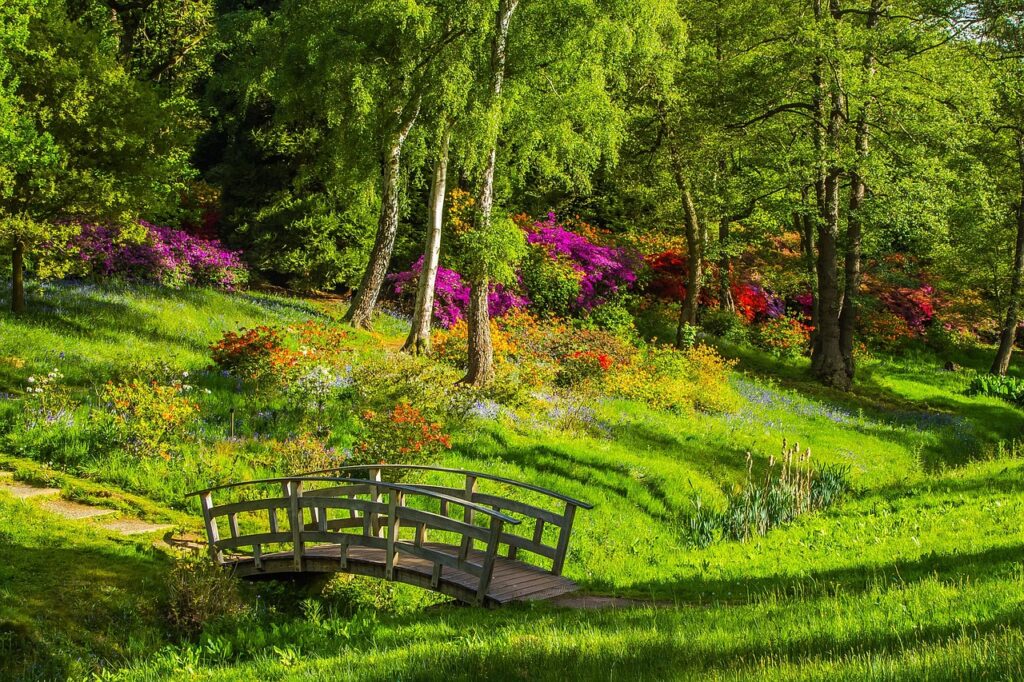There’s something magical about a little wooden bridge in a garden. It turns an ordinary corner into a focal point, adds charm to a pond or flower bed, and invites people to pause for a moment. The good news? You don’t have to buy an expensive pre-made bridge. With a weekend, a few basic tools, and some lumber, you can build one yourself.
What You’ll Need
- Pressure-treated wood or cedar (for durability)
- Saw (circular or hand saw)
- Drill and screws
- Measuring tape
- Sandpaper or sander
- Wood sealer or outdoor stain
- Optional: decorative railings or rope
Step 1: Measure Your Space
Decide where the bridge will sit. Measure the gap you want it to cross—over a small pond, a dry stream bed, or even a cluster of flowers. Add a little extra length so the bridge has solid footing on both sides.
Step 2: Cut the Frame
Use sturdy planks (such as 2x6s) to create the curved or straight frame of your bridge. If you want a slight arch, mark a gentle curve on the wood before cutting. Don’t worry if it’s not perfect—imperfections give it character.
Step 3: Add the Decking
Lay wooden slats across the frame to form the walking surface. Space them evenly, leaving small gaps so rainwater can drain. Secure each slat with screws.
Step 4: Smooth and Protect
Sand down any rough edges to prevent splinters. Then brush on a wood sealer or outdoor stain. This not only protects against the weather but also brings out the grain and color of the wood.
Step 5: Add Optional Details
Want a more polished look? Add simple railings, rope handrails, or decorative carvings. Or keep it rustic and let the simplicity shine.
Step 6: Set It in Place
Carry the bridge to its designated spot and ensure it sits evenly. If needed, place flat stones under the ends to keep it level and stable.
Why Make Your Own?
Besides saving money, building a bridge yourself gives you the freedom to size and style it to your garden. Whether you want a small, foot-wide path across a flower bed or a broader bridge for a pond, it’s all up to you.
A garden bridge isn’t just a structure—it’s an invitation. It says, “Come closer. Walk here. Enjoy the view.” Once yours is in place, you’ll notice how it changes the feel of the whole space.

